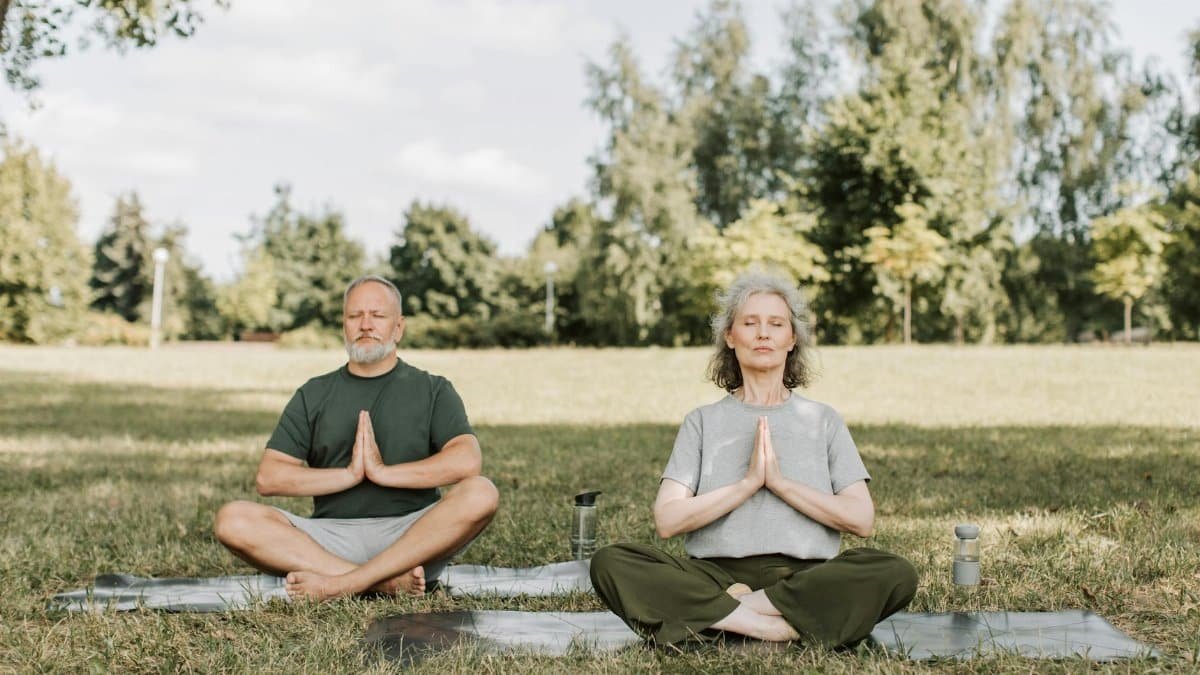In bustling cities like New York or Los Angeles, a quiet revolution is underway. People from all walks of life are turning to consciousness practices to navigate the chaos of daily existence. These methods, once relegated to spiritual retreats, now appear in corporate wellness programs and everyday routines. Amid rising stress levels—exacerbated by economic pressures and digital overload—Americans are seeking ways to foster inner peace. A recent survey by the Pew Research Center highlights this shift, showing that over 40% of adults have experimented with mindfulness or similar techniques in the past year. This trend reflects a broader cultural move toward self-awareness, where consciousness practices serve as tools for restoring calm and building resilience. But what exactly do these practices entail, and how can they lead to genuine tranquility?
1. Mindful Breathing: The Foundation of Inner Calm

Start with the breath. It’s simple, yet profoundly effective. Mindful breathing anchors the mind in the present moment, cutting through the noise of anxious thoughts. Imagine a busy parent in Chicago, juggling work calls and school pickups, pausing for just five minutes to focus on each inhale and exhale. This practice isn’t new; it’s rooted in ancient traditions but backed by modern science. Researchers at Harvard Medical School have shown that deliberate breathing activates the parasympathetic nervous system, reducing cortisol levels and promoting relaxation.
Consider how this works in real life. One anonymous account from an online forum described a high-stakes meeting where nerves threatened to overwhelm. By centering on their breath—inhaling deeply for four counts, holding, then exhaling slowly—the individual regained composure. The shift was immediate: heart rate slowed, focus sharpened. Studies from the National Institutes of Health confirm that such techniques can lower blood pressure and improve emotional regulation over time.
Yet, it’s not always straightforward. Distractions abound in our always-on world. The key lies in consistency. Begin with short sessions, perhaps during morning coffee or before bed. Over weeks, this builds a habit that restores calm amid turmoil. In 2025, with mental health challenges on the rise, mindful breathing stands out as an accessible entry point to consciousness practices, offering peace without needing special equipment or time commitments.
2. Body Scan Meditation: Releasing Hidden Tensions

Shift attention to the body. A body scan meditation involves mentally sweeping through each part, from toes to head, noting sensations without judgment. This practice uncovers stored stress, often manifesting as tightness in the shoulders or a knot in the stomach. Picture a teacher in Atlanta, exhausted after a long day, lying down for a 10-minute scan. She notices the weight in her legs, the warmth in her hands, gradually easing into a state of release.
Science supports this approach. A study published in the Journal of the American Medical Association found that regular body scans can alleviate chronic pain and anxiety. Participants reported feeling more grounded, as if shedding invisible burdens. It’s a reminder that peace comes from within, by acknowledging rather than ignoring physical cues.
Challenges arise when the mind wanders, pulling focus to worries. Gently redirecting attention fosters patience. Integrate it into routines, like after exercise or during commutes. For many, this practice transforms vague unease into targeted relief, aligning with broader consciousness practices that emphasize holistic awareness. Explore resources from the Greater Good Science Center at UC Berkeley for guided sessions that make starting easier.
Reflect on its deeper impact. In a society fixated on productivity, pausing to scan the body counters the grind, inviting moments of profound stillness. It’s not about perfection; even imperfect attempts yield benefits, slowly cultivating a calmer baseline.
3. Gratitude Journaling: Cultivating Positive Awareness

What if noting three good things each day could rewire your outlook? Gratitude journaling does just that, a consciousness practice that shifts focus from lacks to abundances. It starts small: jot down appreciations, like a warm meal or a kind word from a friend. In Seattle’s rainy winters, a software engineer began this ritual, finding it pierced through seasonal gloom.
This isn’t mere positivity fluff. Research from the American Psychological Association demonstrates that consistent gratitude boosts well-being, enhancing sleep and relationships. Practitioners often describe a snowball effect: initial entries feel forced, but soon genuine warmth emerges, fostering peace.
Doubts creep in during tough times—how to be grateful amid loss? Here, the practice shines by encouraging nuance, acknowledging hardships while spotting silver linings. Vary it: some use apps, others notebooks. One story shared publicly recounted journaling through unemployment, which helped maintain hope and eventually led to new opportunities.
Incorporate it seamlessly. Evening reflections work best, reviewing the day without judgment. As 2025 brings uncertainties, gratitude journaling serves as a steady anchor, reminding us that peace stems from perspective. It complements other practices, creating a tapestry of mindful living.
Explore its layers. Beyond lists, some add why they’re grateful, deepening the emotional connection. This evolves into a personal archive of positivity, consulted during low moments to restore equilibrium.
4. Loving-Kindness Meditation: Extending Compassion Outward

Extend goodwill beyond yourself. Loving-kindness meditation, or metta, involves silently repeating phrases like “May I be happy” and extending them to others, even strangers or adversaries. It builds empathy, dissolving barriers that fuel inner conflict. Envision a nurse in Houston, amid hospital chaos, practicing this during breaks to recharge emotionally.
Evidence mounts for its effects. A meta-analysis from Stanford University, detailed in the Stanford Center for Compassion and Altruism Research, shows it increases positive emotions and social connectedness. Participants feel less isolated, more at peace with the world.
Resistance often surfaces when directing kindness toward difficult people. That’s the point—it challenges and expands the heart. Start small, with loved ones, then broaden. Many report reduced resentment, replaced by understanding.
Weave it into daily life: during walks or waits in line. In our divided times, this practice fosters communal harmony, aligning with consciousness practices that promote unity. It’s transformative, turning self-focused calm into shared serenity.
Delve deeper. Some visualize recipients, adding vividness. Over time, it reshapes interactions, making kindness habitual. For those seeking lasting peace, loving-kindness offers a bridge from personal to collective well-being.
5. Nature Immersion: Connecting with the External World

Step outside. Nature immersion invites conscious engagement with the environment—walking in a park, listening to birds, feeling the earth underfoot. It quiets mental chatter, restoring a sense of belonging. Think of a retiree in Denver, hiking trails weekly, where the vastness of mountains dwarfs daily worries.
Studies affirm its power. Research from the U.S. Forest Service links time in nature to lowered stress hormones and improved mood. It’s a primal reset, tapping into evolutionary roots.
Urban dwellers face hurdles, like limited green spaces. Adapt by tending houseplants or viewing nature videos. One shared experience highlighted a city dweller’s balcony garden, which became a sanctuary for reflection.
Enhance it with intention: observe details, like leaf textures or wind patterns. In 2025, as climate concerns grow, this practice also nurtures environmental stewardship, blending personal peace with planetary care.
Consider its ripple effects. Regular immersion sharpens awareness, making other consciousness practices more potent. It’s a holistic capstone, grounding abstract mindfulness in tangible reality, ultimately leading to enduring calm.
Reflect on integration. Combining it with breathing or gratitude amplifies benefits, creating a personalized routine. As lives accelerate, nature immersion reminds us that true peace often lies in simplicity, just beyond the doorstep.
